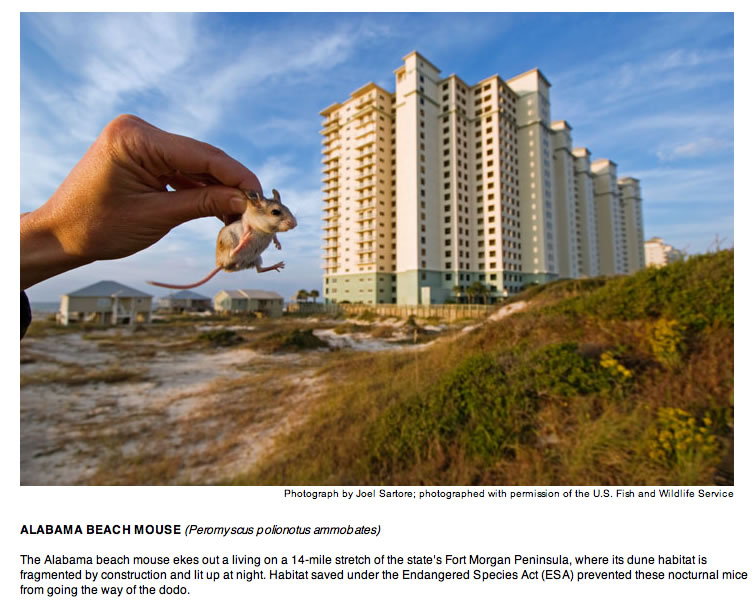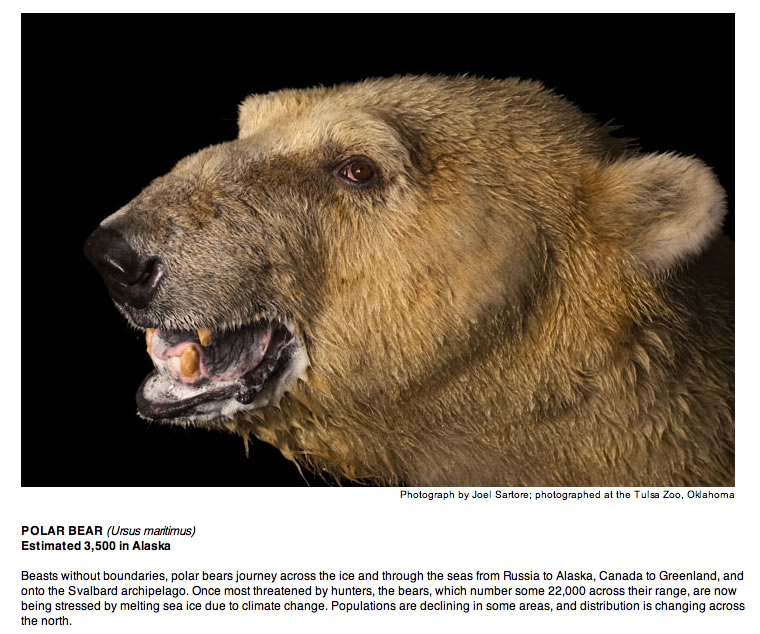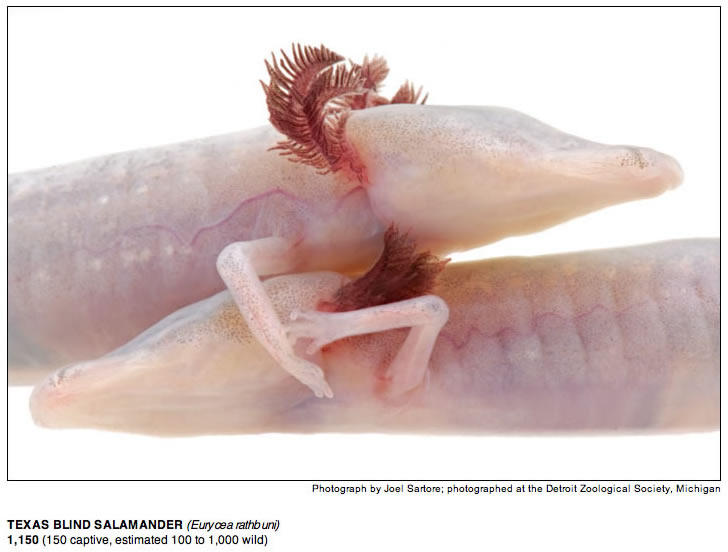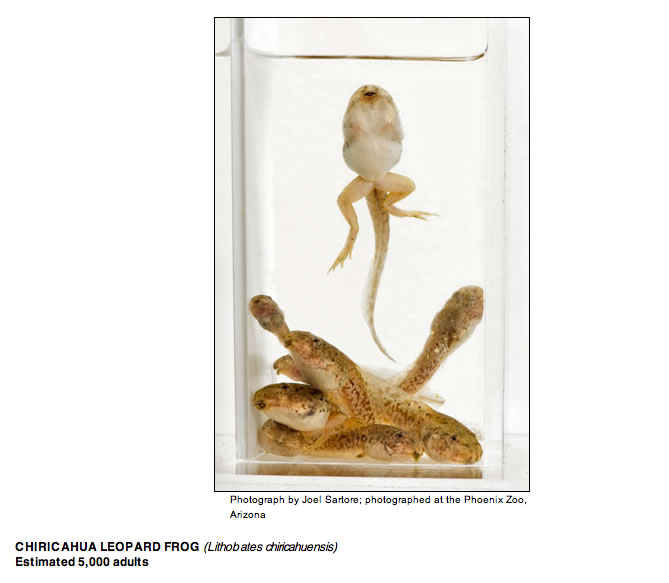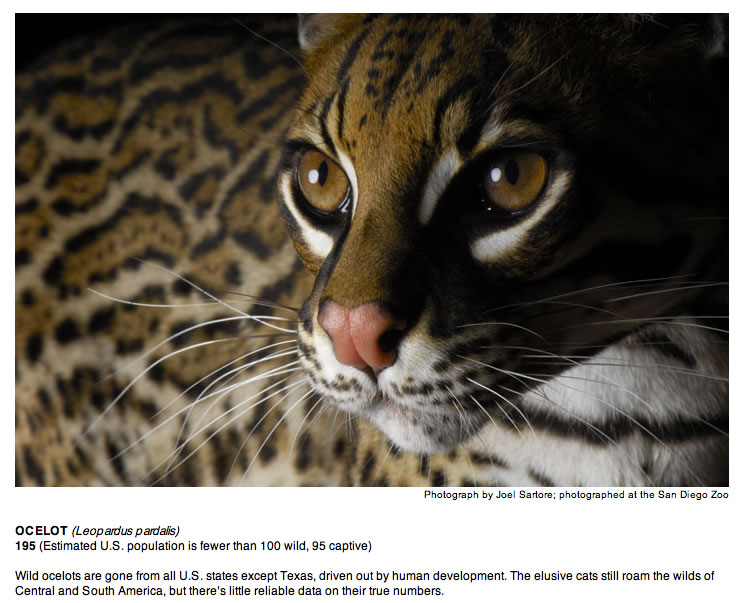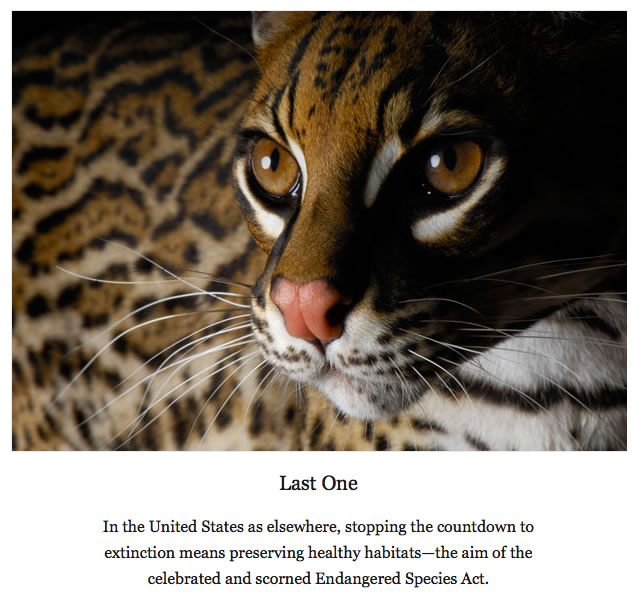
In the United States as elsewhere, stopping the countdown to extinction means preserving healthy habitats—the aim of the celebrated and scorned Endangered Species Act.
By Verlyn Klinkenborg - Originally printed in the National Geographic Magazine
The final resting place of the last dusky seaside sparrow is a glass bottle in the Ornithology Collection at the Florida Museum of Natural History. The bird's eyes are heavily mantled, and its feathers have been ruffled by the alcohol that nearly fills the bottle. A paper tag states that the bird, an old male, died on June 16, 1987. Three and a half years after that sparrow's death, a terse entry appeared in the Federal Register announcing that the dusky seaside sparrow was now extinct and had been removed from the federal government's list of endangered and threatened wildlife. Neither the bird nor its critical habitat—the salt marshes of Florida's Merritt Island, which is also the home of the John F. Kennedy Space Center—would be protected any longer by the Endangered Species Act.

What killed the sparrows of Merritt Island? In a word, improvements. No one ate the dusky seaside sparrow or hunted it for sport. Its nests weren't vandalized, nor was it suddenly preyed upon by a newly introduced predator. But by spraying with DDT to control mosquitoes and building impoundments that allowed freshwater vegetation to take over the salt marshes, humans adjusted the ecosystem—hoping to improve their own lives—and discovered, too late, how finely attuned to its home in the cordgrass the dusky seaside sparrow really was. That last bottled sparrow is what a species looks like when its habitat has vanished for good.
For 35 years, ever since Richard Nixon signed it into law in December 1973, the Endangered Species Act has served as a biological half-way house, a kind of protective legal custody for life-forms at risk of disappearing. It would be more accurate, in a way, to call it the Endangered Species and Habitat Act, since the purpose of the law is to protect species by identifying and then protecting their critical habitat—old-growth forest for the northern spotted owl, the Little Tennessee River for the snail darter. The act has been controversial ever since it was signed, not because it tries to save plants and wildlife but because it tries to save the habitat they need to survive. Usually—and here is where the trouble arises—this means preventing humans from altering those ecosystems in any way.
What passed in 1973 was a lean, tough act. It called upon every department and agency in the federal government to work explicitly toward protecting endangered and threatened species. It required the federal government to cooperate with state governments in doing so, and it pledged the United States to live up to several international treaties whose purpose is to conserve species facing extinction. It was, in a sense, a bill of rights for the rest of creation.

There was a sense of urgency in the act—an urgency it shared with the Clean Air and Clean Water Acts of 1970 and 1972. What inspired them all was a groundswell of environmental awareness rising from many sources—including Rachel Carson's Silent Spring, published in 1962—and the sudden, painful realization that many species, whales and whooping cranes alike, were collapsing in numbers.
Is the urgency any less today? There were nearly 100 million fewer Americans in 1973, and some 2.8 billion fewer people on the planet. Scientists were just beginning to imagine climate change of the order now being projected, and its effect on wildlife and plants. Report after report—on habitat loss, deforestation, the pillaging of ocean fishing stocks, the plummeting of migratory bird populations—clearly indicates that the picture for many species, perhaps most, is far worse now than it was 35 years ago.
And yet in that time, the act has become a battleground. In part this is because it has created an ongoing conflict between the right to manage and develop property as an owner sees fit and the need to protect habitat critical to any endangered species that live on it. There's no mistaking the sober intent of the act. It prohibits the "taking" of any endangered species, and makes it illegal to destroy critical habitat, even on private land. Some landowners feel this provision violates their legal rights. They've taken their argument all the way to the Supreme Court, and mostly lost. Some landowners who feared the possible impact of the Endangered Species Act have even rushed ahead to exploit their property preemptively—by logging it, for instance—while a species is being considered for listing. To prevent this, and to create a safety valve in the law, the federal government has created programs like Safe Harbor. Participating landowners agree to protect habitat in exchange for assurances that more restrictive limits will not be imposed on their property.
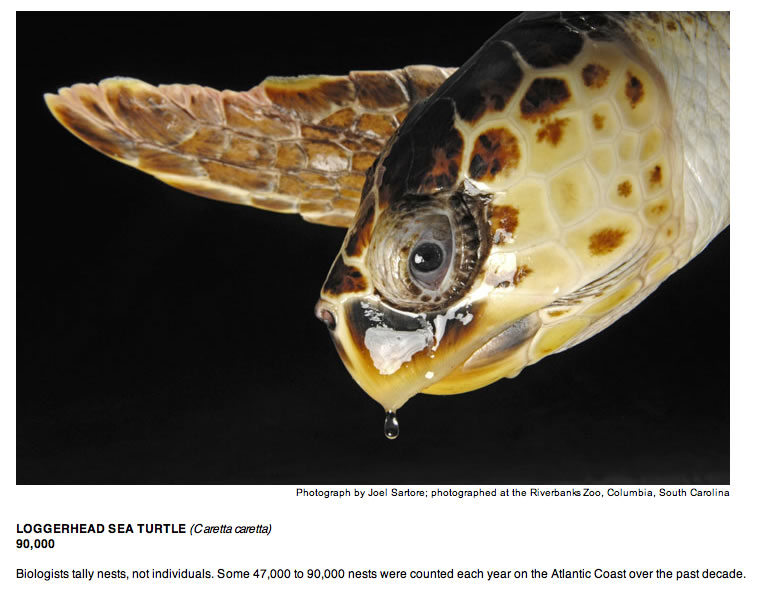
But the act remains on life support. It has not been reauthorized—given multiyear funding—since the late 1980s, subsisting instead on annual appropriations requested by the Interior Department. The Bush Administration has done nearly everything it could to endanger the act itself by decreasing funding and politicizing the scientific evaluations that determine the status of species at risk. As this article goes to press, only 64 species have been listed in the almost eight years George W. Bush has been in the White House. During his father's four years, the total was 235.
There's nothing easy about adding a creature to the list. Sometimes a species is proposed by the Fish and Wildlife Service or the National Marine Fisheries Service. Sometimes it's proposed by the public or a conservation group. A candidate for listing must undergo a scientific review and a public comment period. One of the most recent additions—the polar bear, which was given threatened status last May—suggests some of the inherent difficulties. Polar bear habitat is dwindling due to climate change, but it's also being compromised by the rush to exploit the Arctic for minerals and petroleum. Dirk Kempthorne, the Secretary of the Interior, listed the polar bear only after being forced to by a federal court, and only after calling the Endangered Species Act "perhaps the least flexible law Congress has ever enacted." In its waning months the Bush Administration proposed regulatory changes that would gut the act by allowing federal agencies, not scientists, to decide whether to protect a species.
At present 1,050 species in the United States and its neighboring waters are listed as endangered—at risk of extinction. Another 309 are listed as threatened, or likely to become endangered in the foreseeable future. There are recovery plans—strategies for restoring dwindling populations—for most of them, including measures like acquiring critical nesting beaches for Atlantic loggerhead sea turtles or restoring wetland habitat for the copperbelly water snake. But critical habitat has been designated for only 520 species. And when it comes to actual recovery, the numbers are not encouraging. Since 1973, only 39 U.S. species have been removed from the endangered and threatened list. Nine of those went extinct, and 16 were removed when evidence emerged that a listed species was not, in fact, imperiled. Only 14 have recovered enough to be delisted. Meanwhile, listing is pending for nearly 300 official candidates, everything from Las Vegas buckwheat to the Miami blue butterfly.

Critics say those numbers show how ineffective the Endangered Species Act really is. But the numbers may instead show just how much economic and political inertia the act has faced. And there are other ways to measure its success. How many species might have vanished without it? Perhaps the best measure of the act's value is the very contention it causes, the fact that it gives endangered species a day in court and helps us see the unintended consequences of our actions. It reminds us that what look like simple economic decisions—to build a subdivision or auction new drilling leases or plant more corn for ethanol production—have to be considered within the greater economy of nature, where many lives are in the balance.
Some creatures are so iconic that it's easy to see why we take the trouble to save them. The bald eagle was removed from the list in 2007 because its numbers in the lower 48 states have been successfully restored—from fewer than 500 nesting pairs in 1963 to some 10,000 pairs in 2007. One population of the grizzly bear—in Yellowstone National Park—has graduated from the list. So have such impressive species as the peregrine falcon and the American alligator.
But what about the Delhi Sands flower-loving fly, an inch-long insect that now lives in only a few locations in southern California's Riverside and San Bernardino Counties? Or the 165 remaining Salt Creek tiger beetles, which dwell in a few surviving patches of saline marsh near Lincoln, Nebraska? What about Mississippi sandhill cranes, which are down to about 25 breeding pairs? Or the once widespread Higgins' eye pearly mussel, whose range has shrunk to a few pools in the Mississippi River and its tributaries? What about a shorebird like the red knot, which is not federally listed but is in steep decline from the overharvesting of its predominant food source, horseshoe crabs?

Most people have never heard of, much less seen, these creatures. They have no immediate appeal except their own intrinsic beauty. They stand for nothing except their own way of life, which has been hindered by development, pollution, or the spread of invasive species.
After 35 years it has become clear that the Endangered Species Act is really a test—and not just to see whether we can do the scientific and bureaucratic and legal legwork quickly enough to make a difference for the thousands of species at risk. The act is a test of priorities—a test the just elected President and his administration will face anew. After all the politically delicate lessons we've learned about protecting species at risk, will the country recommit itself to the task with the directness and the idealism of 1973?
Again and again, the battle over listing a species—giving it the protection of the law—boils down to the choices we make in our ordinary lives. Listing the greater sage grouse, for instance, would hamper natural gas and coal development in Wyoming. But we could offset those losses in production by conserving energy, something we ought to be doing anyway to slow climate change. It seems like a paradox. Adding species to the endangered list takes the concerted effort of scientists, legislators, conservationists, and ordinary citizens. But what saves species, in the end, is human restraint, the ability to balance our needs against the needs of the rest of the lives on this planet.
We have no way of guessing how long our own kind will survive, but one thing is certain. The better the chances of survival for the plants and animals and insects you see in these photographs—and for all their endangered kin—the better our own chances will be.
